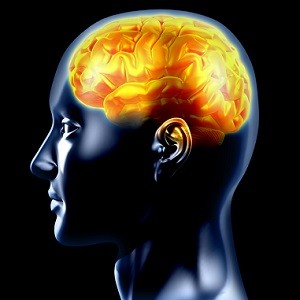Stroke
 A stroke occurs when there is a reduction in the flow of blood to the brain. The lack of blood supply may be the result of a blockage in an artery or a burst blood vessel in the brain. A stroke deprives brain tissue of oxygen and nutrients, causing brain cells to die. A stroke is a medical emergency and requires immediate attention by a medical professional. Prompt treatment can minimize damage to the brain and prevent further complications.
A stroke occurs when there is a reduction in the flow of blood to the brain. The lack of blood supply may be the result of a blockage in an artery or a burst blood vessel in the brain. A stroke deprives brain tissue of oxygen and nutrients, causing brain cells to die. A stroke is a medical emergency and requires immediate attention by a medical professional. Prompt treatment can minimize damage to the brain and prevent further complications.
Types of Stroke
There are two different categories of strokes, ischemic and hemorrhagic. The more common type of stroke is ischemic, which accounts for approximately 85 percent of all strokes. Common types of ischemic strokes include thrombotic and embolic.
Thrombotic Stroke
A thrombotic stroke occurs when an artery supplying blood to the brain becomes blocked by a blood clot. Blockage of the artery usually happens gradually.
Embolic Stroke
An embolic stroke, also known as a cerebral embolism, occurs when a blood clot forms in another part of the body, breaks loose and travels through the bloodstream to the brain. The clot lodges in a narrowed brain artery, blocking the passage of blood.
A hemorrhagic stroke is caused by a blood vessel's leaking or bursting in the brain. This has the double effect of cutting off the blood supply to brain cells, and causing blood pressure to build up within the skull. There are two types of hemorrhagic strokes.
Risk Factors for Stroke
The most common risk factors for stroke include high blood pressure, high cholesterol, smoking and diabetes. Additional risk factors include:
- Prior stroke or heart attack
- Pregnancy
- Genetic predisposition
- Obesity
- Cardiovascular disease
- Use of birth control pills or other hormone therapies
- Heavy or binge drinking
People who are over the age of 55 and people of African-American descent also have a higher risk of stroke. Using illicit drugs such as cocaine or amphetamines also increases the risk of stroke.
Signs and Symptoms of Stroke
There are five major symptoms of a stroke:
- Numbness or weakness on one side of the body
- Difficulty speaking
- Difficulty with vision
- Difficulty walking
- Severe headache
Headache may be accompanied by a stiff neck, facial pain, pain between the eyes and/or vomiting.
Treatment of Stroke
Stroke treatment varies depending on the type of stroke that occurred.
Ischemic Stroke Treatment
To treat an ischemic stroke, blood flow to the brain needs to be restored quickly. Emergency treatment with medication improves the chance of survival and lowers the chance of complications. Drugs to break up the blood clot(s) need to be started quickly (no more than 5 hours after the stroke). Aspirin, and an injection of a clot-busting drug called a tissue plasminogen activator (t-PA), are usually the course of treatment for an ischemic stroke. t-PA can be given to patients only within a certain period of time following the stroke, and only in situations in which it will not worsen bleeding in the brain. Some ischemic strokes may require surgery to remove the blockage.
Prevention of Stroke
Knowing the risk factors and making lifestyle changes are the best ways to reduce the risk of having a stroke. Following a healthy lifestyle can lower the risk of stroke. Many strokes are preventable, and prevention techniques include:
- Lowering cholesterol and fat intake
- Quitting smoking
- Exercising regularly
- Maintaining a healthy weight and eating a healthy diet
- Managing stress
- Reducing or limiting alcohol consumption
- Controlling diabetes
- Eliminating cocaine and illegal drug use
Because more than 50 percent of strokes are caused by high blood pressure, it is the most important health condition to treat. Patients at high risk for stroke may be prescribed medications known as antihypertensives to control their blood pressure.
